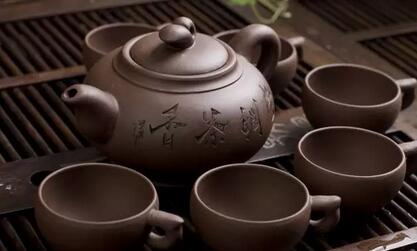Although everyone loves drinking tea, not everyone knows how to enjoy it at the right time or season. Drinking tea improperly can lead to adverse effects such as stomach coldness, diarrhea, and insomnia, rather than providing health benefits.

Drinking Tea at the Optimal Time
Floral tea at 9 a.m.
The first cup is morning tea, best consumed between 9 and 10 a.m. after breakfast. It helps refresh the mind, detoxify, and combat fatigue, making it the most important of the three daily teas. Floral tea, a blend of fresh flowers and tea leaves, is ideal for waking up the senses. However, those with insomnia or allergies should avoid it. Brew floral tea in a lidded porcelain cup with freshly boiled water, steeping briefly to release its aromatic properties.
Green tea at 1 p.m.
The second cup is afternoon tea, best consumed between 1 and 3 p.m. after lunch or a nap. A slightly stronger brew helps lower blood lipids and protect blood vessels. Green tea's health benefits, such as antioxidant and antiviral properties, come from its polyphenols. Brew green tea at 85°C for 2–3 minutes, using 3 grams of tea per 150 ml of water. A glass or porcelain cup is ideal.
Black tea at 6 p.m.
The third cup is evening tea, best consumed between 6 and 7 p.m. after dinner. It aids digestion and lowers blood lipids. Black tea, being fermented, has low caffeine content and minimal impact on sleep. Those with a cold constitution benefit from its warming properties. Brew black tea with boiling water for 5 minutes, using the same tea-to-water ratio as green tea. Avoid tea after 8 p.m.

Green Tea in Spring and Summer
Seasonal tea drinking matters. Green tea is best in spring and summer. In spring, Xinyang Maojian and Biluochun help combat drowsiness. In summer, green tea cools and reduces blood lipids. Avoid drinking it on an empty stomach, as its polyphenols may irritate the stomach.
Oolong Tea in Autumn
Oolong tea, like Tieguanyin and Dongding Oolong, is neutral and ideal for autumn. It refreshes the mind without being too stimulating. Brew 10 grams of oolong tea with boiling water for 2–5 minutes, using a purple clay teapot or lidded cup.
Black Tea in Winter
Black tea, especially ripe Pu-erh, warms the body in cold weather. It also aids weight management. Brew with boiling water, rinsing briefly first to remove impurities. A purple clay teapot enhances its flavor.

Brewing Methods for Different Teas
Green tea: Use 80–85°C water, brew for 2–3 minutes, and drink immediately. Avoid covering to prevent bitterness.
Black tea: Use boiling water, brew for 3–5 minutes, and cover to retain aroma.
Oolong tea: Use boiling water and rinse first. Brew multiple times, increasing steeping duration.
Black tea (Pu-erh): Rinse briefly with boiling water, then steep for 2–3 minutes. Use a purple clay teapot.
Use soft water (low mineral content) for the best flavor.

Choosing the Right Teaware
Green tea: Delicate varieties like Longjing and Biluochun suit glass cups. Lower-grade greens can be brewed in porcelain or teapots.
Black tea: High-quality varieties like Keemun and Darjeeling shine in white porcelain or glass lidded cups. Broken black tea works well in porcelain pots.
Oolong tea: Tieguanyin and similar teas suit lidded cups for aroma. Darker oolongs like Da Hong Pao benefit from purple clay teapots.
Floral tea: Premium varieties like jasmine pearls suit glass cups. Lower grades can be brewed in porcelain lidded cups or pots.

Tea-Drinking Taboos
Tea does not sober you up. Drinking tea after alcohol strains the kidneys and heart.
Avoid tea after greasy meals. Tannins in tea bind to proteins, causing constipation.
Tea hinders fever recovery. Tannins raise body temperature and reduce sweat, delaying recovery.